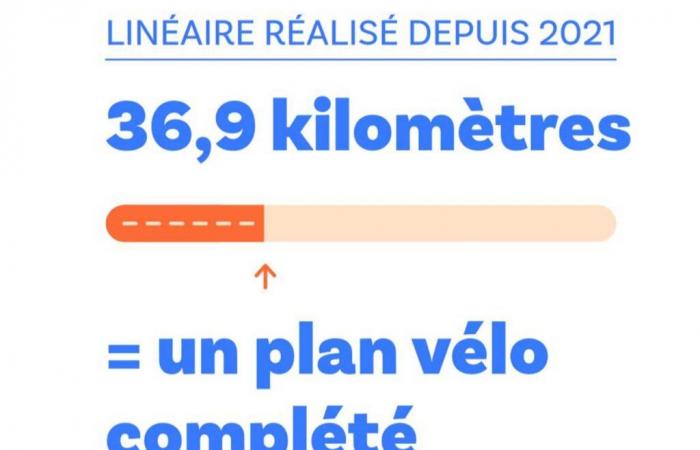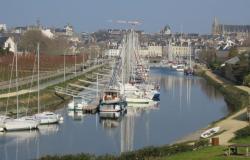With the adoption of its bike plan ambitious in 2022, the Hauts-de-Seine have positioned themselves at the head of the Ile-de-France departments most committed to the cycling transformation of their territory. With a budget of 150 million euros over seven years and a target of 120 kilometers of development to be carried out by 2028, the department intends to offer quality, secure infrastructure adapted to high user demand. . However, while 37 kilometers of tracks have been delivered since 2021, many expectations persist regarding the concrete and accelerated implementation of the promised projects.
Hauts-de-Seine displays a particularly high level of ambition with 31% of its cycling plan already completed. Since 2021, nearly 37 kilometers of cycling infrastructure have been created, positioning the Department among the most dynamic in Île-de-France. This dynamic was initiated in full health crisiswhen the temporary “coronapists” made it possible to test new routes and encourage cycling on strategic routes. Today, the Department is striving to perpetuate these developments and improve their security with physical separators and more durable infrastructure.
The challenge of securing bridges
Among the most significant projects, the complete redevelopments of certain roads, such as the D1 in Boulogne-Billancourt or along the T10 tramway, demonstrate a desire to go beyond simple cycle lanes painted on the ground. On the other hand, these structuring initiatives, although promising, require time to succeed, arousing a certain impatience among users and stakeholders. cycling associations local. As such, the Department is encouraged to increase the number of quality transitional arrangements, particularly on routes with high traffic potential.
A specific issue in Hauts-de-Seine concerns the securing bridgeswhich often constitute dangerous cuts for cyclists. Of the 14 strategic bridges, only a few, such as the Saint-Cloud bridgehave recently benefited from cycling facilities. The associations are calling for continued efforts, with temporary or permanent solutions that would guarantee route continuity and a reduction in usage conflicts, particularly with pedestrians.
Consultation and adaptation as key
The consultation with cycling associations has become a pillar of the department's cycling policy. Inspired by the model of the Seine-Saint-Denisthe establishment of a departmental committee for active modes made it possible to strengthen dialogue between elected officials, technicians and users. However, to maintain this positive dynamic, it will be essential to integrate feedback and strengthen discussions on future projects.
Hauts-de-Seine also shows a desire to improve the quality of existing cycling infrastructure. The exemplary layout of the D106 at Doveswith its adapted surface and secure borders, illustrates the ambition to design infrastructure that meets the needs of urban and peri-urban cyclists. This type of achievement could serve as a model for future avenues, taking into account the specific challenges of each area of the territory.
A promising future but under pressure
While Hauts-de-Seine has been able to lay solid foundations, expectations remain high for the second part of the departmental mandate. This will involve transforming the projects under study into concrete achievements and accelerating work on priority areas. Transitional arrangements could save time while ensuring the safety of users, particularly on busy roads and major routes. The Department is also called upon to demonstrate flexibility to adapt its plans according to emerging needs and the expectations expressed by the population.
With 80 kilometers of projects currently being studied and an already honorable completion rate, Hauts-de-Seine appears to be an example to follow for many Ile-de-France departments. But for this dynamic to continue, financial and technical commitment must be maintained, as must consultation with local stakeholders. The challenge remains to make cycling a real alternative for daily mobility, while ensuring not to sacrifice the quality of infrastructure in favor of a simple race for mileage. If the Department manages to meet these challenges, it could become a model of excellence in sustainable mobility in Île-de-France.






